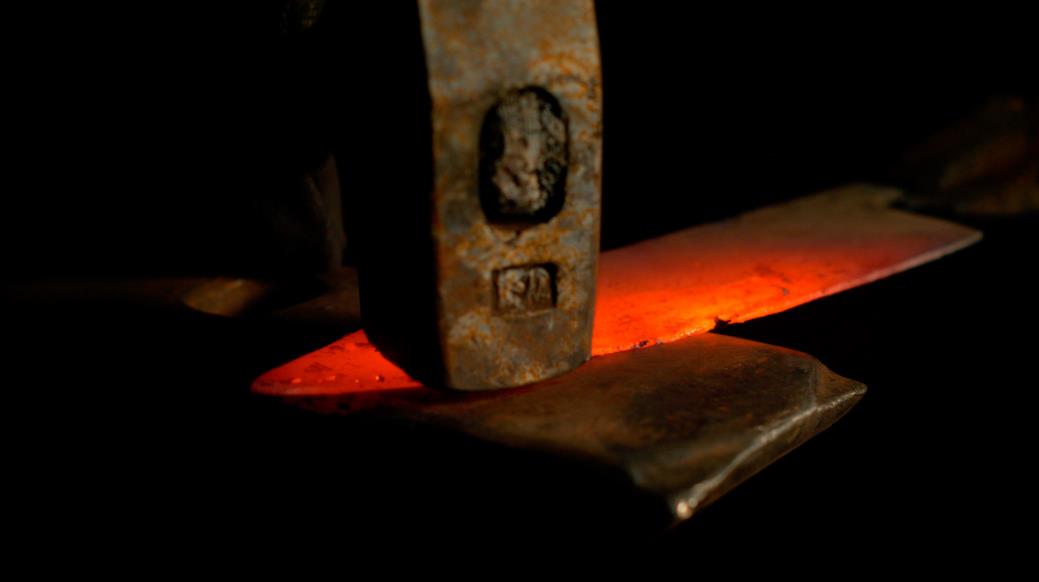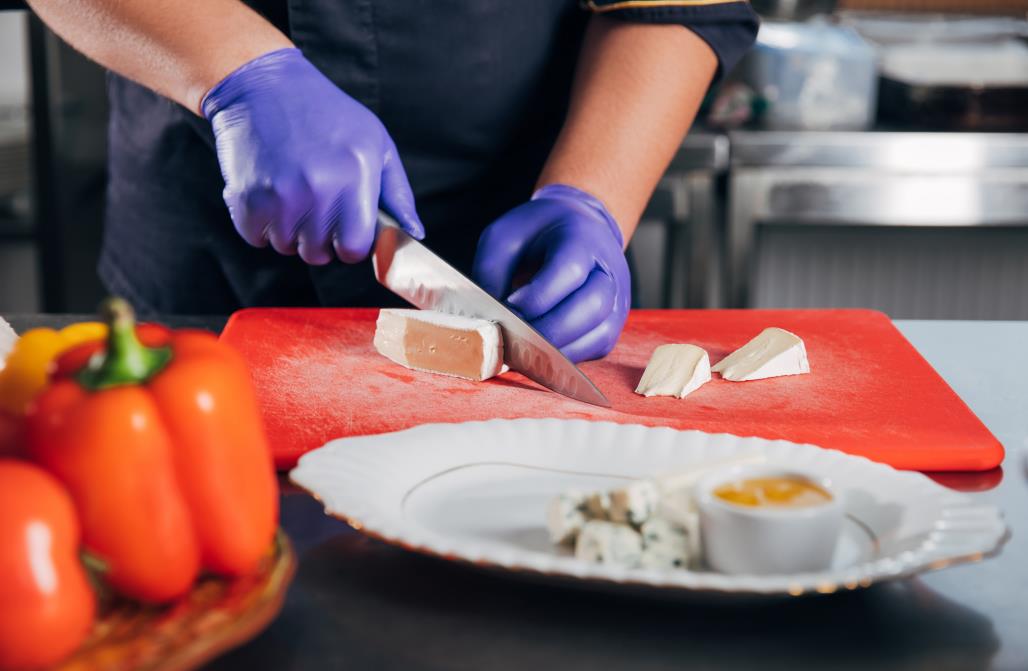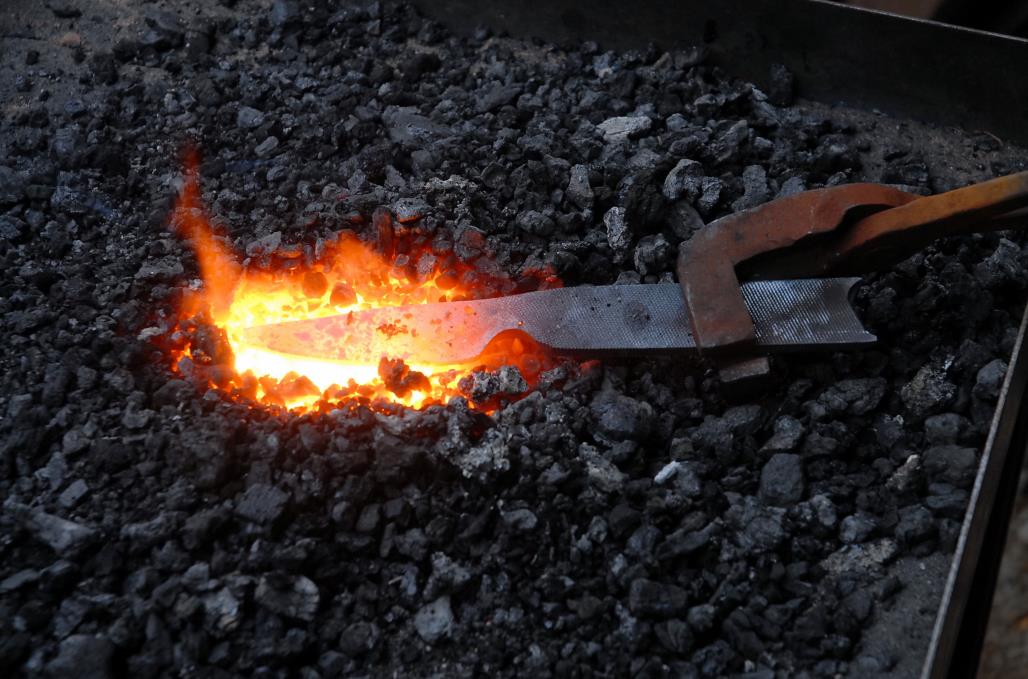420J2 is a stainless steel grade best known for its affordability and corrosion resistance. It’s a low-end, low-carbon stainless steel often used in budget knives, kitchen cutlery, surgical equipment, haircutting scissors, and other applications where cost is a significant factor.
Because of the low carbon content, 420J2 is not a high-performance steel. Knives from this steel don’t hold an edge well and may exhibit scratches due to the low wear resistance. However, the steel may appeal to chefs who value toughness and corrosion resistance.
This article will explore the composition, properties, and various applications of 420J2 steel. Read on to discover how it fares as a kitchen knife material.
Table of contents
420J2 steel composition
Below is a breakdown of the 420J2’s steel composition
- Carbon: 0.15%–0.36%
- Chromium: 12%–14%
- Nickel: 1%
- Silicon: 1%
- Manganese: 1%
- Phosphorous: 0.04%
- Sulfer: 0.03%

Carbon helps stainless steel improve its hardness, strength, and wear resistance. In 420J2, the carbon content is relatively low compared to other steels. Ideally, steel is high in carbon when the carbon content is between 0.6 and 1%, but the recommended range for a kitchen knife is usually 0.3%–0.6%.
As for chromium, 420J2 falls within the desired range. Chromium provides steel with corrosion-resistant properties. It reacts with the oxygen present in the air to form a thin, transparent oxide layer on the surface of the steel.
This oxide layer, which is only a few atoms thick, is highly resistant to corrosion and protects the steel from further oxidation. It also enhances the steel’s toughness and hardness.
Nickel helps the steel resist corrosion, especially at higher temperatures. Also, it forms a solid solution with iron, making the steel tougher and stronger. 420J2 also contains 1% silicon which aids in the removal of impurities and helps harden the steel.
Manganese reduces the brittleness in steel, allowing the steel to endure stress without damage, while phosphorous and sulfur enhance machinability.
420J2 steel properties as a kitchen knife material
Steel properties are the most important things to consider when shopping for a knife. You want to ensure the knife is hard enough to withstand heavy use, has excellent edge retention, can resist oxidation, is relatively easier to sharpen, and can last long.
The following is a detailed discussion of 420J2 properties in relation to kitchen knives.
Edge retention
Edge retention describes how well a blade can maintain its sharpness over time. Carbon content is one of the most significant factors affecting edge retention in steel. Generally, the higher the carbon content, the better the edge retention.
0.15%–0.36% carbon content, as seen in 420J2, is very low. As such, the blade will require frequent sharpening to maintain its cutting ability. That’s especially true if you use the knife frequently.
The advantage of low carbon content is that the knife is relatively easy to sharpen, so you can quickly get your knife to a sharp edge.
Toughness

In the context of steel knives, toughness refers to the ability of the blade to resist chipping, cracking, or breaking when subjected to high impact or stress loads. Knives are often subjected to high forces, such as chopping or slicing through tough materials like bone or dense vegetables. A tough knife will withstand these forces without becoming damaged or deformed.
Several factors influence the toughness of steel knives, including the composition and heat treatment of the steel. Generally, knives made from high-carbon steel tend to be harder and more brittle, while knives made from lower-carbon steel are ductile and tougher.
However, other factors, such as alloying elements like vanadium or molybdenum, can also influence a knife’s toughness.
420J2 steel has moderate toughness, making it suitable for knife blades that require a balance of hardness and durability. This steel’s moderate toughness is partly due to its low carbon content, which allows it to flex slightly under stress without cracking or breaking.
Corrosion resistance
420J2 steel is known for its excellent corrosion resistance, particularly in environments with low exposure to corrosive substances. This type of steel contains a relatively high amount of chromium, which helps form a passive oxide layer on the material’s surface.
This oxide layer is a barrier, protecting the underlying steel from corrosion and other chemical damage. However, it is worth noting that 420J2 steel may not be as corrosion-resistant as other types of stainless steel, such as 440C or S30V.
In more aggressive environments or under prolonged exposure to corrosive substances, 420J2 steel may experience pitting or other forms of corrosion. Therefore, we recommend cleaning and drying knives or other tools made from 420J2 steel after use and storing them in a dry place to ensure longevity.
Wear resistance
Wear resistance in steel knives refers to a material’s ability to resist wear and abrasion over time, particularly in areas of high friction or contact. In knife blades, wear resistance is an important property, as blades are often subjected to repeated use and contact with other materials, which can cause the blade to become dull or lose its edge.
Generally, steels with a higher carbon content tend to be harder and more wear-resistant, as the carbon helps to increase the steel’s hardness and wear resistance. Other alloying elements, like chromium, vanadium, and molybdenum, can also improve a steel’s wear resistance by promoting the formation of hard carbides or other wear-resistant phases in the steel’s microstructure.
The low carbon content in 420J2 means the knife’s low resistance is low. The blade will easily develop scratches, which can get deeper and scattered over time. While you can polish the blade and return it to its former self, it will only be a matter of time until the blade develops more scratches.
Hardness
Hardness is a crucial factor to consider when it comes to steel knives. The hardness of steel is determined by its ability to resist indentation, and it is typically measured using the Rockwell scale.
420J2 steel typically has a Rockwell hardness of around 50-55 HRC (Rockwell C scale), which is relatively low compared to many other types of knife steel. This low hardness means that 420J2 steel is not particularly wear-resistant or hard, but it is relatively easy to sharpen and can be more corrosion-resistant than some higher-hardness steel.
Is 430J2 steel good for kitchen knives?
Given the properties and composition discussed above, it’s pretty clear that 420J2 doesn’t make the best kitchen knives. The low carbon content means the blade doesn’t hold an edge well and requires regular sharpening. Because of the same reason, the steel is prone to scratches, which destroys its aesthetic appeal.
While it is not the best steel for high-performance knives, it does offer some benefits that make it a popular choice for certain applications. One of the advantages of 420J2 steel is that it is highly corrosion-resistant, making it a good choice for use in damp or humid environments.
It’s also relatively easy to sharpen and maintain, which is important for kitchen knives that need to be kept sharp for optimal performance. 420J2 steel is inexpensive, making it an ideal material for making budget knives, surgical instruments, and domestic scissors.
420J2 vs other steels

420J2 vs. 440A
420J2 and 440A are both stainless steels. 440A is also a low-end stainless steel, but it is considered a higher-quality steel than 420J2. It has a higher carbon content (0.60%–0.70%), which makes it harder and more durable than 420J2. Because of the high chromium content (17%), it’s more corrosion-resistant than 420J2.
420J2 vs 440C
440C steel is a popular stainless steel used in knife making due to its excellent balance of corrosion resistance, hardness, and wear resistance. It is a high-carbon stainless steel with 1.1% carbon, 17% chromium, and small amounts of other elements such as manganese, silicon, and molybdenum.
The high carbon content of 440C steel gives it excellent hardness and wear resistance compared to 420J2. Thus, it’s an excellent choice for knives that must maintain a sharp edge for long. It is often compared to the more expensive steels like VG-10 and S30V, but it is more affordable.
420J2 vs 1095 steel
1095 is a high-carbon non-stainless steel with a carbon content of around 0.95%. It’s known for its excellent hardness, wear resistance, and edge retention but has poor corrosion resistance compared to 420J2. The poor corrosion resistance is because it lacks chromium, meaning it doesn’t form a chromium oxide coating on the steel to protect it from corrosive elements like acids.
Closing thoughts
In conclusion, 420J2 steel is a low-end, low-carbon stainless steel that is popular due to its affordability and corrosion resistance. While it may not be the best option for high-performance knives, it is a suitable choice for budget knives, kitchen cutlery, surgical equipment, and other applications where cost is a significant factor.
At HDMD knives, we make high-quality, high-carbon handmade kitchen knives that will change your culinary experience. Visit our store and check out the available discounts!









